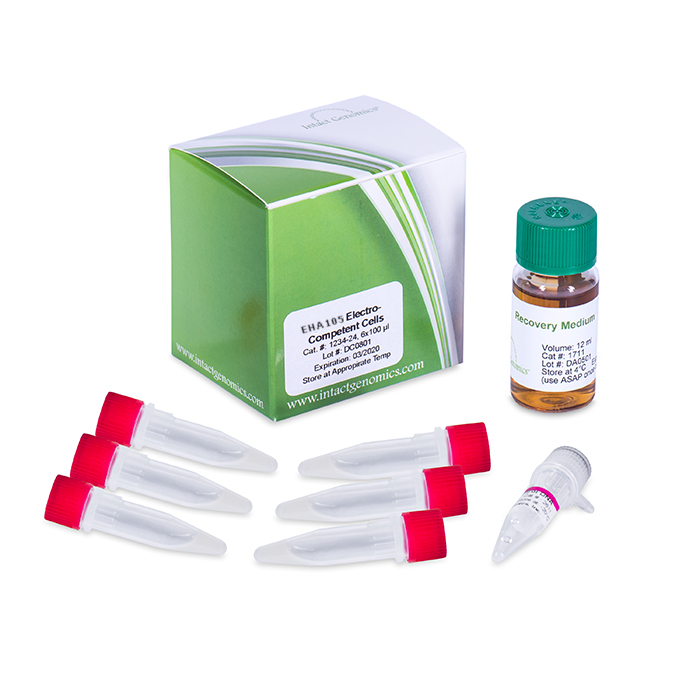Description
The EHA105 Agrobacterium Chemically Competent Cells are optimized for the highest transformation efficiencies which is ideal for applications requiring high transformation efficiencies, such as with cDNA or gDNA library construction. The EHA105 strain is useful for transgenic operations of rice, tobacco and other plants. EHA105 contains a rifampicin resistance gene (rif). EHA105 strain also contains an amber basic Ti plasmid pEHA105 (pTiBo542DT-DNA) without self-transport function, which contains the vir gene.
Specifications
Reagents Included
- EHA105 Agrobacterium Chemically Competent Cells
- DNA (pCAMBIA1391z, 500 pg/µl)
- Recovery medium
Note: Liquid nitrogen is required.
Storage
Quality Control
General Guidelines
Follow these guidelines when using EHA105 Agrobacterium Chemically Competent Cells:
- Handle competent cells gently as they are highly sensitive to changes in temperature or mechanical lysis caused by pipetting.
- Thaw competent cells on ice, and transform cells immediately following thawing. After adding DNA, mix by tapping the tube gently. Do not mix cells by pipetting or vortexing.
Calculation of Transformation Efficiency
Transformation Efficiency (TE) is defined as the number of colony forming units (cfu) produced by transforming 1µg of plasmid into a given volume of competent cells.
TE = Colonies/µg/Plated
Transform 1 µl of (500 pg/µl) pCAMBIA1391z control plasmid into 50 µl of cells, add 950 µl of Recovery Medium. Recover for 3 hours and plate 100 µl. Count the colonies on the plate in two days. If you count 5 colonies, the TE is calculated as follows:
Colonies = 5
µg of DNA = 0.0005
Dilution = 100/1000 = 0.1
TE = 5/.0005/.1 = 1×105
Please note, all agrobacterial strains are not well studied for antibiotic resistance and there are many agrobacterial strains. Therefore, it is the customer’s responsibility to make sure his/her vectors are compatible with the Agrobacterial strains if he/she uses an alternate antibiotic selection than kanamycin-selection.1084-06 1084-18 1084-10
